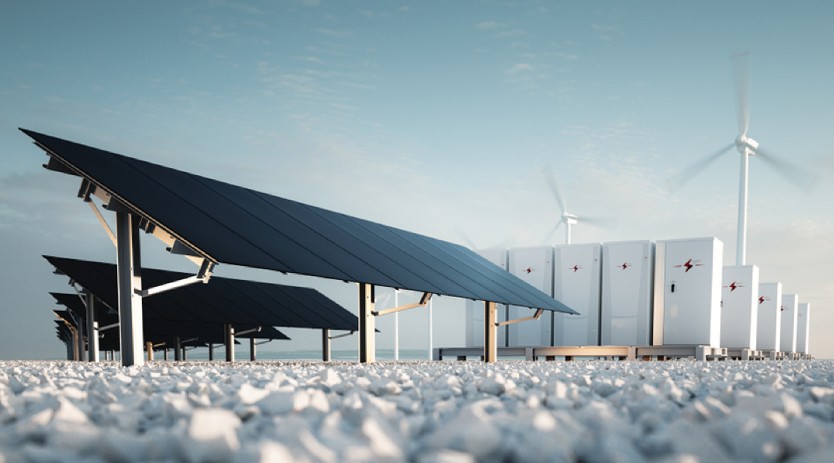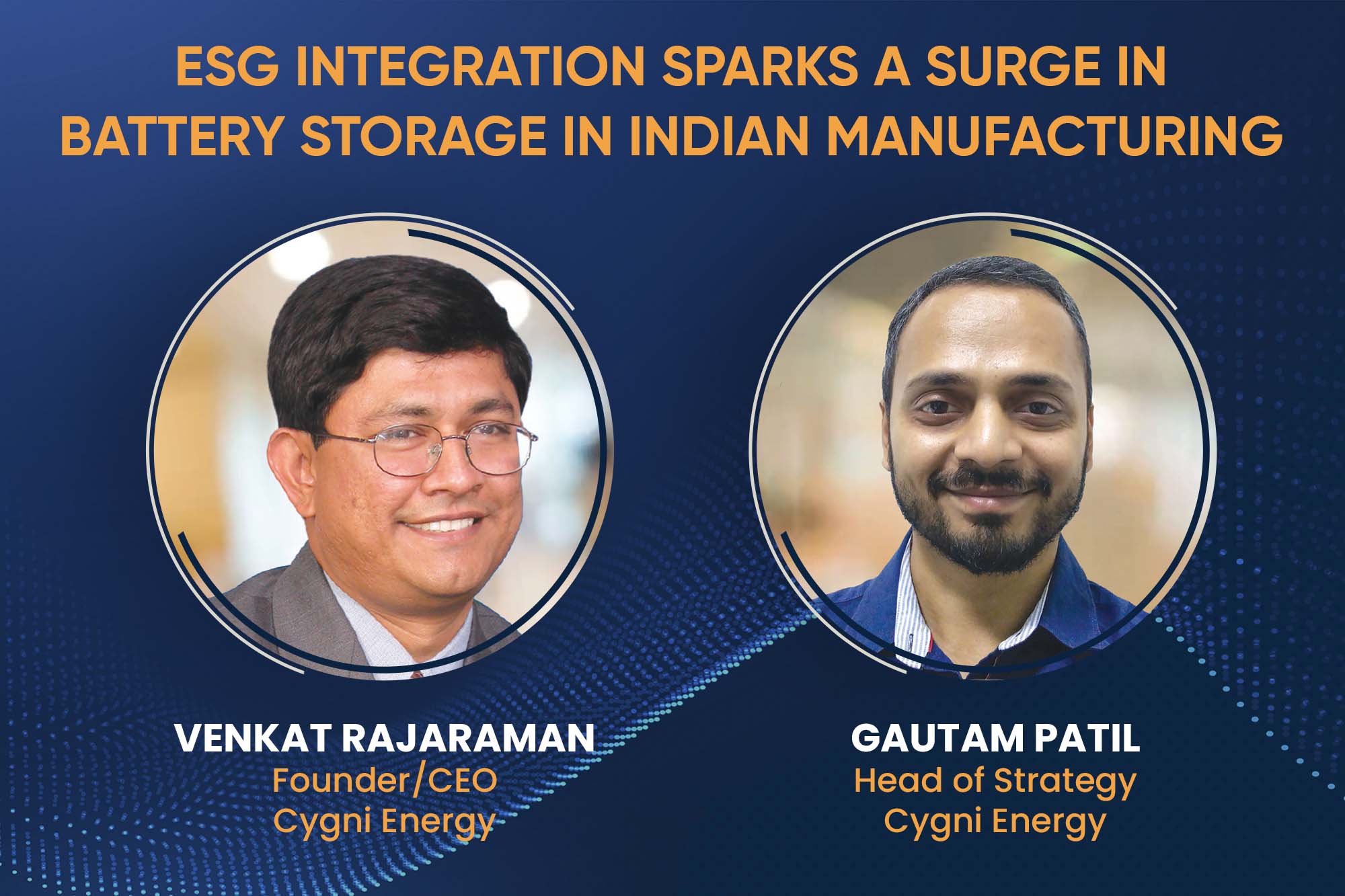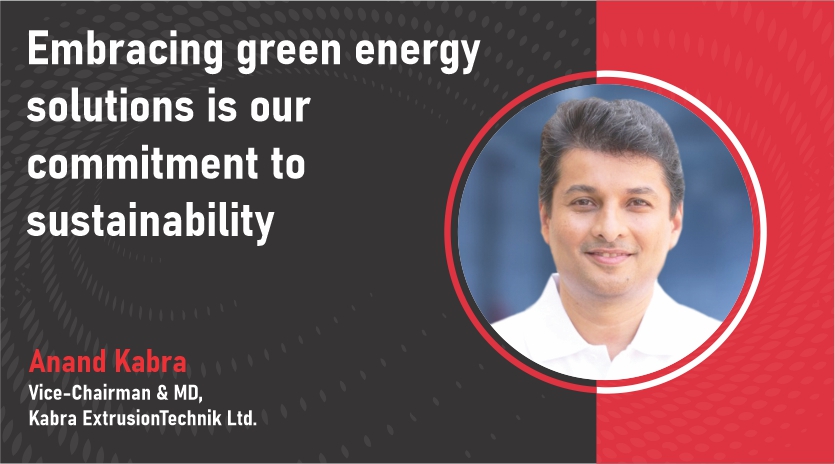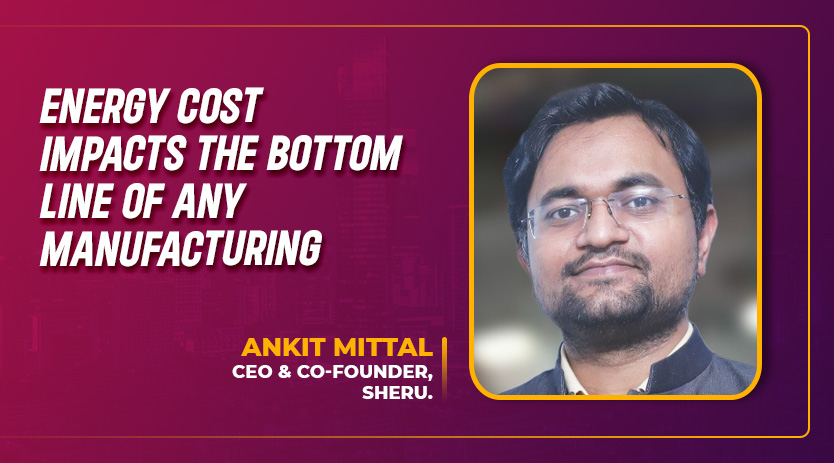Strategising energy for power delivery on demand
By admin May 16, 2022 3:35 pm IST
Exploring sustainability for industrial manufacturing processes, e-mobility and resources on purpose; opportunities abound in managing and diversification of stored energy for use on demand.
Energy storage industry has continued to evolve, adapt, and innovate in response to changing energy requirements and advances in technology. Studies predict that the primary energy consumption may rise by 48 percent in 2040. Energy storage systems provide a wide array of technological solutions to managing power in case of contingencies. Decreasing use of fossil resources and their negative impact on the environment has accelerated the shift towards more efficient natural energy sources such as solar and wind. Wind power plants generate clean energy that reduces environmental impact on production processes.
Role of each technology has its distinctive advantage among various approaches to manage energy. Some innovations regarding energy storage line up to pump hydro, thermal energy storage, mechanical energy storage, batteries etc. The hydropower and nuclear power constitute alternative energy sources for requirement criteria. The thermal energy storage system is one such sustainable solution for its role towards natural balance. It fulfills growing demand as backup for industrial processes, cooling and building management systems. Thermal energy involves solar thermal power plants that produce and store energy being captured when the sun is shining. This acts as power source to meet demand on use. Battery storage systems cells convert stored chemical energy into electrical
energy and its main applications are on increasing spree due to current emphasis on electrical vehicles. Nuclear source has its own advantages in the energy scheme of things and even new technologies are on the way to develop new storages systems to be used as backups.
Energy opportunities
Energy has become an indispensable resource in today’s times. Most of the things that we use today are either based on digitalization or on automation. And, to automate anything, we require energy management and energy storage. Advancement in technology ensures power storage and delivery as and when needed.
The effective management of the distributed energy resources and their storage systems is essential to ensure efficient operation and long service life. Effective implementation and usage of energy storage system in the distributed grid requires intelligent and flexible energy management strategies, capable of handling the dynamics of distributed systems. Recent research works focus on implementing energy management to minimize operating costs and to reduce emissions. Voicing his opinion, K. G. Deenathayalan, Business Head – Energy Division, Fuji Electric India explains, “Application of optimization tools and techniques have enabled the development of flexible
and effective energy management strategies. An effective dispatch and management strategy also needs to ensure efficient storage operation.”
Energy storage aims to capture the energy and effectively deliver it whenever needed. Ashutosh Verma, Founder, Exalta India points out “The storage is important on the industrial and manufacturing level. Storage is becoming more critical day by day as the requirement increase. For energy requirements in manufacturing, battery is a good example of energy storage.” To some extent, batteries contribute to boost manufacturing in India. We are witnessing consistent increases in energy prices due to multiple factors. Shifting towards energy storage seems more beneficial to meet the manufacturing demands. “Advantages of using thermal energy system include an increase in overall efficiency and better reliability. It can lead to better economics, reductions in investment, running costs and less pollution of the environment, i.e., fewer carbon dioxide emissions is the focus”, elaborates Dinesh Semwal, Founder, Ensavior Technologies.
Hydrogen energy
Hydrogen storage is another form of chemical energy storage. One can re-release the energy by using gas as fuel for internal combustion engines or fuel cells. It can be produced from electricity by the electrolysis of water. Hydrogen must be stored in underground caves, for large-scale energy storage. The steel containers can be used for small-scale storage. From the view point of Ashutosh, the problem with hydrogen is that we cannot store it under a lot of pressure. ‘We have to keep it in dehydrated form. Effective technologies for storing hydrogen have emerged recently.’
Energy managementFor effective implementation of energy management, many new tools have been introduced with the help of technological advancements. These tools help in the effective management of energy.
UPS inverter systems prevent data damage mostly in case of power failure. There is limitation for amount of time a UPS will provide power, once primary power is interrupted. “Contributing to ensure an uninterrupted power supply, variable frequency drive mechanisms on the main engines control frequency and voltage to reduce energy consumption; along with energy-efficient pumps and motors is an energy management measure”, adds Ashok Chhajer, Sr. General Manager, OE Sales, Balkrishna Industries Ltd. It indirectly compensates energy storage mechanism.
For heating and cooling systems, programmable thermostats and building energy management systems can significantly reduce the energy consumption. In the case of batteries, ink-based batteries are doing well in terms of energy storage. We currently see different battery systems available in the industry, which are developed to provide various levels of backups given diversified environments and operating conditions. Efforts are being made to encourage Aluminum-based batteries, hydrogen-based storage batteries, and junction-based batteries. The use of Li-ion batteries is rapidly growing as storage solutions due to their high energy density and longer life. Battery storage systems are good in providing green energy and meeting electricity demand. India’s
manufacturing strengths, its dynamic public and private sector leaders will be key factors in realizing these ambitions. Creating battery manufacturing ecosystem could cement India’s opportunity for radical economic and industrial transformation in the global market.
The data loggers related to IoT play an important role in energy management is, what Ashutosh thinks about. These effectively contribute in ensuring the effective implementation of energy management. Energy management involves planning and operation of energy production and energy consumption units as well as energy distribution and storage. The objectives are resource conservation and distribution, climate protection, and cost savings, ensuring easy and consistent access to users.
Storage technologies
As we know, the energy storage industry is catching up fast for wider adoption. The efforts to lift our power generation and electrical grid are a multipronged effort. It needs a new generation mix of low-carbon sources that include hydro, renewable and nuclear. Deenathayalan is of opinion that many areas have already been identified as focus for the power industry in recent years. Several challenges continue to impact the grid, as new technology advancement is transforming the way electricity is produced and consumed.
Since the energy storage segment is evolving we are going to witness several new technologies in storage. It is critical for any success in a carbon-constrained world that uses intermittent sources like solar and wind energy. According to Dinesh, the thermal energy storage technology stocks thermal energy, and the stored energy can be used at a later time for cooling applications, particularly in buildings and in industrial processes
However, the government’s goals, concerted strategies, and a collaborative approach could help India meet its emission reduction targets while avoiding import dependency on battery packs and cells. This could help establish India as a hub for cutting-edge research and innovation, boosting its manufacturing capabilities and foster economic growth.
Thinking ahead
The requirement to fulfill energy needs is quite demanding. Coal, the most common energy source is being followed by solar energy as an eco-friendly energy source. Importance of greening the grid and powering the world with renewable is increasing daily. The need for a viable storage solution is getting more pronounced. “As the world is moving ahead to Net-zero and decarbonised energy systems, the rise of energy storage technologies will be critical for widespread adoption”, says Deenathayalan. The challenge is to prioritize these objectives and evaluate an optimum strategy for the considered application that can assure reliable power delivery without affecting system stability. A model energy storage system may consist of an electrolyser that is powered by excess wind or solar electricity coupled with a hydrogen storage system. A fuel cell power generation system will utilize the hydrogen to harvest and supply power when required.
Furthermore, going by the current overall growth scenario, energy storage and energy management needs flurry of investments. The required thrust will usher into lucrative energy storage market. Conclusively, investments and innovative technologies will lead to propulsion in growth; suffice enough to manage energy availability in meeting quick emerging demands.
Cookie Consent
We use cookies to personalize your experience. By continuing to visit this website you agree to our Terms & Conditions, Privacy Policy and Cookie Policy.
















